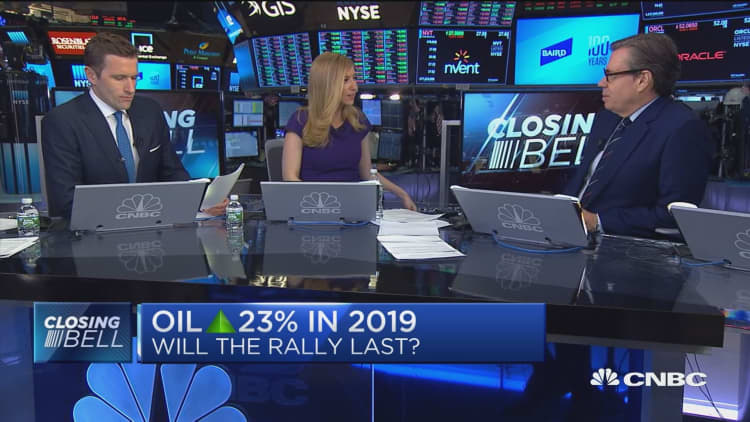
Goldman Sachs is warning that this year's commodity price rally may be running out of steam, so investors should tread carefully and monitor data before going long oil and metals.
Commodities have bounced 12 percent this year after a steep sell-off in the final months of 2018. At this point, Goldman analysts say fundamental supply and demand will have to drive further gains — and they're not yet sure whether the figures will underwrite a further rally.
Goldman acknowledges that the market has moved past temporary drags like the longest-ever U.S. government shutdown, while China is embarking on a more expansionist policy. But the bank is still preaching caution.
"While this looks like it would point to even more upside for commodities, we believe that commodities have now reached a level where they are no longer significantly undervalued relative to their current fundamentals," the investment bank's commodity analysts said in a research note Monday.
"The risk-reward of being outright long commodities is therefore less compelling now compared to a few months ago, and we recommend a neutral portfolio position in commodities."
In the oil market, Goldman believes demand is holding up despite gloomy forecasts. On the supply side, the bank says Saudi Arabia is taking a "shock and awe" approach to cutting output, while production in Venezuela and Iran is bound to fall further as the two OPEC members remain under U.S. sanctions.
That could push Brent crude oil futures toward $70-$75 in the near term, but Goldman sees prices slipping in the second half of 2019 on an anticipated increase in output from OPEC countries and U.S. drillers.
As for metals, Goldman says demand signals are still relatively soft. Chinese manufacturing data continue to disappoint, property sales figures are depressed and China's latest credit data doesn't necessarily support metals demand, in the bank's view.
However, Goldman expects the outlook to improve, saying January's credit data show Chinese policymakers are committed to supporting economic growth, which is running below the government's target.
The bank sees scope for improvement across the metals market, but thinks there's potentially more profit in looking for relative value trades within the sector.
"Specifically, we see significantly lower growth in copper supply versus zinc in 2019," Goldman said. "Finally, gold's safe-haven status will also likely see relative outperformance as late-cycle recession fears remain and several key central banks continue diversifying their reserve assets."
Jeff Currie, Goldman's global head of commodities research, says gold has sold off on overly optimistic views that Washington and Beijing will soon resolve their ongoing trade dispute. Gold fell toward a five-week low on Tuesday and was last trading around $1,287 per ounce.
"We actually think this is a pound-the-table time to be buying gold right now," Currie told CNBC on Monday. "We're sticking to our $1,450 target."


